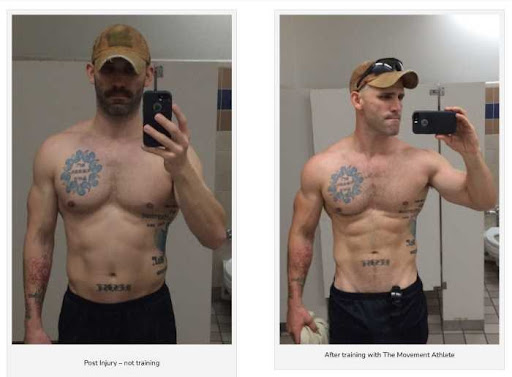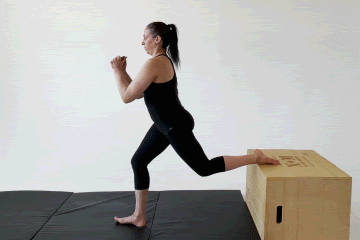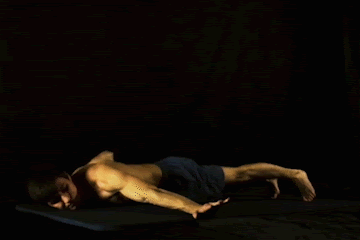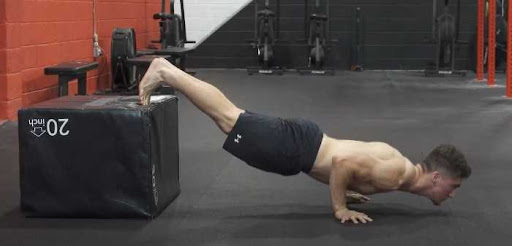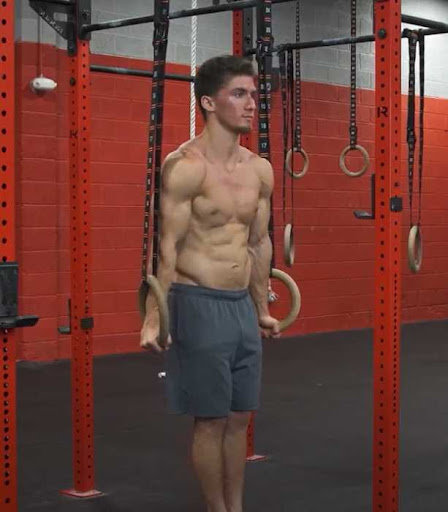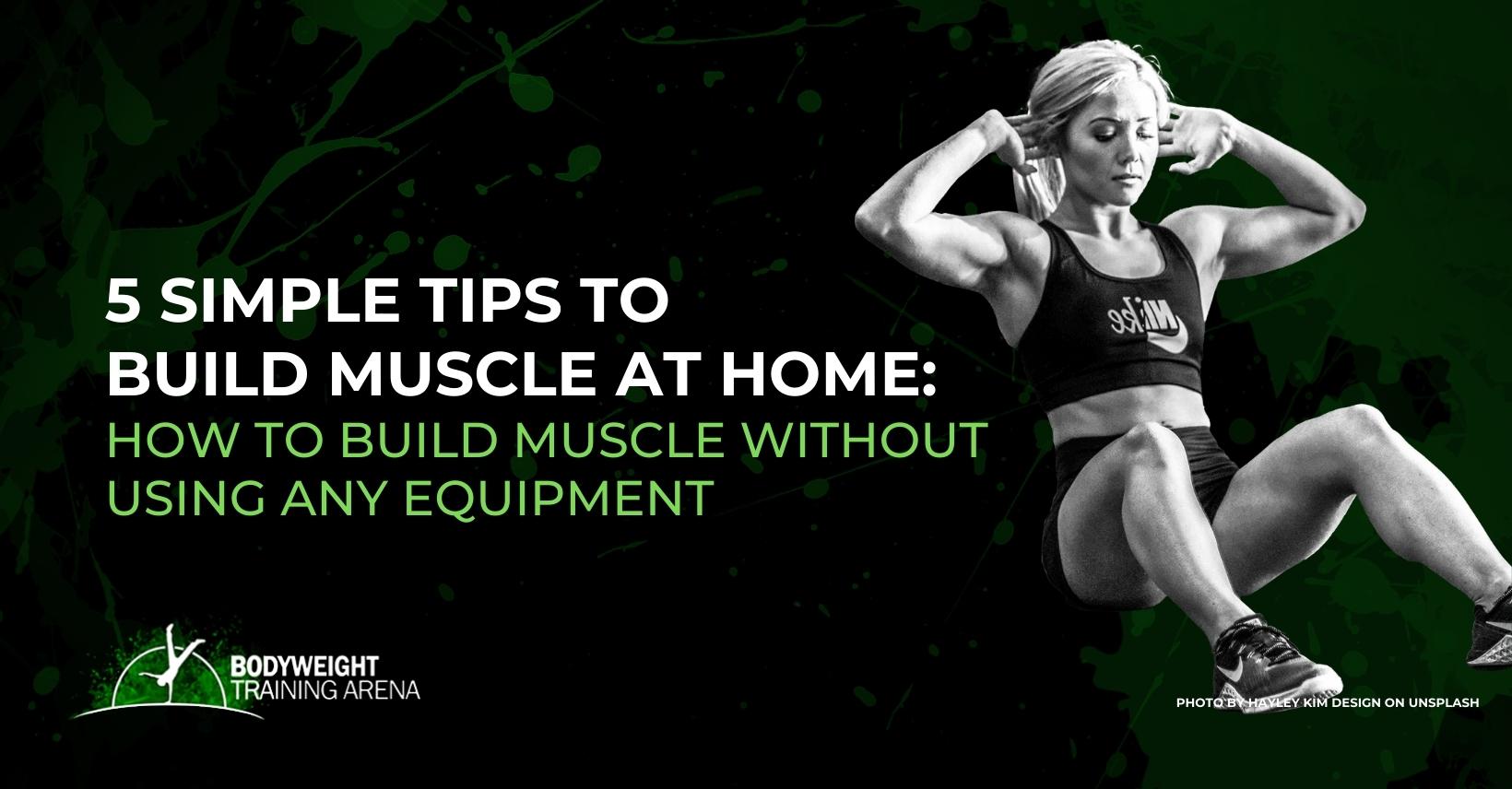
Join the tribe of Movement & Calisthenics Athlete – People just like you that are working with their own body weight to get strength, lose fat build muscle, recover from injuries and live their best lives!
You’ve seen the ads at the gym promising to help you build muscle, but all they’re doing is taking your money. So how to build muscle without using any equipment at home?
Building muscle at home, without any equipment? How is that possible?!
Well, it’s actually easier and much simpler than you might think.
In this article, we’ll be going over a few things you can do to build muscle without using anything but your own body weight and some furniture. No need for an expensive gym membership!
How to build muscle mass
Ryan is a Movement Athlete who built back his physique through home workouts after getting injured in the gym. Here’s Ryan’s calisthenics story.
To build muscle mass, we need to satisfy three factors. Not getting any of these three will rip you off your potential for muscle building.
Here’s the basic concept of how to build muscle size in a general context.
Resistance Training
Resistance training is basically a training style that requires you to move the resistance to challenge your body to stimulate muscle tissue micro-tears. These types of workouts encourage muscle growth and are the optimal training method to do so.
Bodyweight exercises are one example of resistance without lifting weights. Obviously, weight lifting is the most popular approach but you can definitely gain muscle with bodyweight training.
The catch is that you get enough stimulation to challenge your body and build muscle. You need to push harder every session which is called progressive overload. We will cover this deeper in the later parts of the article.
There are many methods to make an exercise progressive and induce progressive overload without using weights. You can read more about it in this article: Progressive Calisthenics.
Nutrition
After putting your body under a lot of stress, you then need fuel for your body to repair itself in order to grow stronger and bigger.
Keep it simple. Eat whole foods, others in moderation. Meet your protein requirement and have a slight caloric surplus.
You can get away with a slight caloric deficit if you want to burn fat as well, but you have to maintain a very minimal 100-200 caloric deficit to attain this.
You don’t have to take other supplements, but a high-quality protein whey to get your amino acids is already enough.
To make it brief, caloric surplus means eating more calories than your body needs to sustain its weight. Of course, as you bulk up, you might also build some fat, but by keeping the surplus minimal, you get to minimize the fat and maximize the muscles.
Recovery
No matter how hard you train using the best bodyweight exercises, implementing a personalized, advanced training program like The Movement Athlete app (apologies for the plug!), and eating a balanced diet, you will never gain any muscle if you don’t let your body rest.
Muscle recovery is a crucial process to develop muscle. This is when you get more muscle and protein synthesis takes place after breaking your muscles through training, and after refueling from your food.
Give attention to your sleep and recovery so you can start building muscles. Remember that we don’t grow stronger and build muscle during our training, we build muscle DURING OUR REST.
More help on recovery in the article below:
How to build muscles mass at home
Let’s get to it! Can you really build muscle with bodyweight exercises at home and without lifting weights?
Training near failure
A common error why people tend to NOT build muscle is because they are too stuck up with the “IDEAL” number of reps and sets to induce muscle growth.
Common gym bro tells you that you need to hit 8-12 reps per set.
Since we’re working with bodyweight exercises such as pull-ups, sit-ups, plank position, body weight squats, push-ups, and dips, we are limited with the amount of weight we can add to our exercise.
And in order to build muscles, we need to make our body push further what it can already do.
If 8-12 reps of push-ups are too easy, you can increase the reps to even 25, so you can train closer to your muscular failure.
Simply put, muscular failure is when you can no longer perform even a single repetition of an exercise. So pushing closer to failure means that our reps in reserve (RIR) lowers close to 0. At 0, we are already in failure.
A study by Schoenfeld, et al. with trained individuals shows that resistance training in lower loads but with higher volume to compensate can lead to muscle growth. Lower load training done in the experiment is done through lifting weights but a similar effect can be achieved with bodyweight training counterparts.
While higher load exercises can lead to better strength gains, you can still gain muscle through lower intensity exercises given that you train to 0 RIR (muscular failure) or at least close to that as research suggests.
With bodyweight exercises, aim to do the higher reps and sets. So that’s a higher total amount of work volume so that you won’t need weighted exercises to develop upper body muscles and even leg muscles.
Let take push-ups, for example. If you can easily push through 3 sets of 8-12 reps, try pushing for 3 sets of 15 to 30 reps or more and leaving 1 to 3 reps in reserve.
It might not always be ideal for training to failure because of the risk of physical and mental burnout; you can at least hit for muscular failure at the last set of your isolation or final compound exercise.
While it may lean towards muscle strength endurance rather than strength at higher rep ranges, you WILL STILL BUILD MUSCLES through this process.
Using the right progression
Archer push-ups for more chest gains.
Another reason why individuals who train at home without weights fail at building muscle is that they don’t use the right progression that suits their skill level.
Using a too easy exercise that you can do isn’t efficient since you might need hundreds of reps just to slightly stimulate your muscle.
Are you still doing sit-ups to build your abdominal muscles? Calisthenics has a ton of core exercises you can work on. From hollow holds, planks, to L-sits, and dragon flags. All skill levels have a progression or variation that can target any muscle group with scaling intensity.
Think of it as adding strength training to your hypertrophy goals. Building strength increases your potential to build more muscle without lifting weights.
Advanced athletes can use advanced bodyweight exercises. Intermediate calisthenics athletes can always work with the progressions towards these advanced moves.
For beginners, it’s best to start with easier progressions to build a strong foundation. You’ll soon develop muscle as you work with the calisthenics fundamentals.
Here’s a quick rundown on what you can work towards after mastering your fundamentals:
Push-ups -> Variations
For chest – Rings, archer push-ups, one-armed push-up
For shoulders – Handstand push-ups, pike push-up, Pseudo planche push-up
Pull-ups -> One-armed chin-up, archer pull-ups, bodyweight rows, one arm bodyweight rows
Dips -> Ring dips, Bulgarian dips, Turn-out dips
Squats –> Pistol squats, Split squat jumps, Bulgarian lunges,
Calisthenics exercises are scalable and progressive. You don’t necessarily need to be lifting weights are adding weights to your routine at home. Although there’s nothing bad about it. What matters most is that you keep your exercises challenging and hitting multiple joints. Stay with these fundamentals then progress using variations.
Reach optimal set
Most of us use resistance training at home with no free weights so we have to use “lighter weight” such as bodyweight exercises. Similar to training to failure, the topic we’ll touch on next is overall training volume.
Training volume is an excellent tool for inducing progressive overload. It’s basically the number of reps and sets relative to your exercise intensity.
If you feel like bodyweight exercises are too easy, you can choose the harder progression and opt for increasing the number of sets in your workout.
Bodyweight training would require more volume and more sets to reach to induce muscle growth, especially with lighter loading.
The convention is 10-20 sets per muscle group per week, but this is applicable to when you can set the exercise at a higher load.
You can add more sets per week with bodyweight training because of the lighter load we’re pushing or pulling against. If you want to build muscle at home, add more volume to your workout.
Aim for 4 – 5 sets for an exercise as a guideline.
Use your surroundings as equipment
Got no training box? You can always use a piece of sturdy furniture around you.
If you’re too lazy to reach a better volume for building muscle, you can always add weight to your basic exercises.
Not everyone has access to a home gym with complete machines, free weights, and dumbbells, but everyone can use anything in their surroundings as weight.
Are chin-ups getting too easy? Strap a backpack with bottles of water or books inside on and now you’re training weight chin-ups.
The squat position getting too easy but don’t want to work on pistol squat? Get a jug of water, hold it in front of you then perform the squats.
Home training isn’t restricted to bodyweight alone. You can use your entire body as well as using anything around you. Just make sure you are using the important exercises that challenge your body to hit all muscle groups.
Stick to your fundamentals:
Push-up, dip, pull-up, row, squat, stick to these then add your resistance.
You can literally use anything as additional resistance and you can even ask for help with a training partner. When doing planks, you can ask your training partner to push down on your lower back. This will add resistance to your elbow plank if it’s already too easy. Expect core strength without weights.
Check out the article below for more help on what pieces of equipment you need and what alternatives you can opt for in your own home.
THE ULTIMATE GUIDE TO CALISTHENICS EQUIPMENT & ACCESSIBLE ALTERNATIVES
Stay consistent
The ultimate factor why some people build muscle at home and others don’t is consistency.
Consistency, in our context, doesn’t mean doing the same workout over and over again. It means sticking with your workout out plan and maintaining that challenge you have to apply to your body. You have to consistently force your body to work harder every session every week.
You might be training once a week, but as you grow stronger, your body adapts immediately. When you get strong enough, that once-a-week training will not be efficient enough to challenge your body to grow.
For those who have high motivation at the start of training is quite similar. They might be pushing with 5x per week of training from a training hiatus. After one week, fatigue catches up then they’ll find themselves burnout and getting harder to stay consistent.
Stick to a realistic training regimen for your current fitness level then gradually add the intensity from there.
The key to being consistent is building a habit from a manageable workout routine at home before moving to something intense. Don’t immediately jump into an intense workout if you haven’t gotten the grove with the entire exercise routine.
Start slow. You have all the time in the world.
Consistency doesn’t also end after 2 weeks or even 3 months. Fitness is a lifetime journey. We always have something to improve on, even if you’re training at home or training in a gym. Always think long-term. This way, you’ll be set for the future and won’t get frustrated with unsustainable “quick fixes”.
Conclusion
To recap, you need first to satisfy the three main factors to build muscle at home:
- Progressive overload through calisthenics exercises
- Proper nutrition with high protein intake and caloric surplus
- Good recovery through high-quality sleep and stress management
Now to meet the progressive requirement, even being limited with the amount of resistance, we need to do these:
- Train near or until failure
- Use to proper progression according to your skill level
- Reach the optimal number of sets to increase training volume
- Use the surroundings for additional resistance
- Stay consistent with challenging workouts with enough intensity and frequency based on your fitness level
An efficient way of training home is following a guide or a routine. Doing exercises at random will lead to poor results and isn’t conducive to progress.
Here’s a sample of a bodybuilding calisthenics program you can try to build muscle at home.
BEST BODYBUILDING CALISTHENICS ROUTINE
Building muscle in your own home shouldn’t be complicated if you’re doing it right.
As long as you’re enjoying and trusting the process and taking the smart steps, you will eventually lead to your goal even in the comfort of your own home.
Stay strong!

